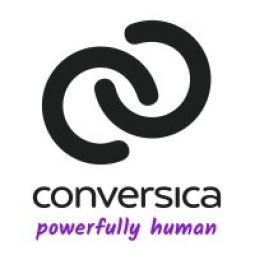技术
- 应用基础设施与中间件 - 数据交换与集成
- 应用基础设施与中间件 - 中间件、SDK 和库
适用行业
- 电子商务
- 回收与废物管理
适用功能
- 销售与市场营销
用例
- 需求计划与预测
- 时间敏感网络
服务
- 系统集成
关于客户
KEMP Technologies 是先进的第 2 层至第 7 层应用交付控制器 (ADC) 和以应用程序为中心的负载平衡领域的行业领导者。该公司在全球拥有超过 40,000 个客户部署,以最佳的基于价值的价格和性能为需要高度可用、可扩展和安全的电子商务、Web 和协作应用程序的企业和组织提供服务。 KEMP 的全球影响力和在市场上的成功导致了销售线索的增加,因此需要更高效和有效的线索管理系统。
挑战
KEMP Technologies 是先进的第 2 层至第 7 层应用交付控制器 (ADC) 和以应用程序为中心的负载平衡领域的领导者,在管理不断增长的销售线索方面面临着重大挑战。随着公司在市场上取得成功,潜在客户管理的复杂性和耗时性也随之增加。该公司发现吸引和培育网络访问者以确定他们的兴趣和意图、通过营销自动化优化潜在客户资格以及提高潜在客户获取的投资回报率变得越来越困难。 KEMP 的全球业务带来了地理和季节性障碍,使这一挑战变得更加复杂。雇用足够的销售代表来覆盖所有高峰期所有地区的原始销售线索变得不切实际。该公司需要一种解决方案来自动培养和与网络潜在客户互动,而不仅仅是简单的一对一电子邮件。
解决方案
KEMP Technologies 向领先的商业智能虚拟助理提供商 Conversica 寻求帮助,以解决其潜在客户管理挑战。该公司实施了 Conversica 的 AI 助手 Olivia 来与传入的潜在客户互动,特别是那些通过其“免费增值”产品的单独网站到达的潜在客户。奥利维亚还被用来重新吸引旧的和休眠的线索。 KEMP 认识到 Conversica 补充其营销渠道和自动化套件的潜力,将其与 Salesforce、Marketo 和营销分析系统集成。这种集成为 KEMP 提供了每个接触点的端到端可见性,减少了跟进的等待时间,并使公司能够准确地了解潜在客户在买家旅程中的位置。人工智能助手擅长进行类似人类的对话,使销售团队能够专注于在购买周期中表现出兴趣和意图的营销合格潜在客户。
运营影响
数量效益

Case Study missing?
Start adding your own!
Register with your work email and create a new case study profile for your business.
相关案例.

Case Study
Water Treatment Energy Management
Water pumping, treatment and conveyance are among the largest energy and cost outlays for many local and regional municipalities. Electricity time-of-use rates and peak pricing tariffs are driving those costs even higher. This case study describes how Monterey Regional Water Pollution Control Agency (MRWPCA) implemented a process data monitoring and control solution in order to analyze and optimize energy use, reduce deployment costs and save operational expenses.

Case Study
Digital Transformation of Atlanta Grout & Tile: An IoT Case Study
Atlanta Grout & Tile, a Tile, Stone & Grout restoration company based in Woodstock, Georgia, was facing challenges with its traditional business model. Despite steady growth over the years, the company was falling behind the web revolution and missing out on the opportunity to tap into a new consumer base. They were using independent software from different vendors for each of their department information and workforce management. This resulted in a lot of manual work on excel and the need to export/import data between different systems. This not only increased overhead costs but also slowed down their response to clients. The company also had to prepare numerous reports manually and lacked access to customer trends for effective business decision-making.

Case Study
Pima County takes significant steps in preserving water source
Pima County is facing the following challenges: - Management of more than 60 million gallons of sewage each day to support the region’s population of more than 1 million people. - To take immediate action when alarms sound alerting operators to issues within the plant The solution should be able to enable the following feature: - To ensure capture of institutional knowledge of current workforce for effective training of future operators - To employ an effective Situational Awareness strategy enabling personnel to effectively understand and address operations of the facility - With assets spread out over more than 700 miles, operational management is difficult

Case Study
IFFCO Boosts IT Performance and Innovates Agriculture with Oracle Cloud
Indian Farmers Fertiliser Cooperative Ltd. (IFFCO), the world’s largest manufacturer and marketer of fertilizers in the cooperative sector, was facing several challenges in its quest to innovate and improve the livelihood of farmers in India. The organization had recently launched a new product, nano urea, which brought new demands to IFFCO’s cloud computing needs. The organization needed a reliable cloud vendor to support the processes of 6–7 new manufacturing plants during the upcoming year, enhancing its production capability 300–350 million bottles of nano urea to meet increasing demand. IFFCO’s cloud adoption was driven by a need to innovate. The organization wanted capabilities for a dynamic business that can adapt to the changing needs of the market while growing fast. However, it was inhibited by rigid on-premises data center deployments and the overhead of maintaining legacy systems. IFFCO wanted to apply the elasticity and availability of cloud for improving overall performance of applications at lowest possible operational overhead. Lastly, IFFCO needed to provide the benefits of its technology to all its stakeholders, including employees, members, transporters, and farmers, some of whom have limited literacy. To accommodate all stakeholders, IFFCO wanted to add a voice interface to its applications.









